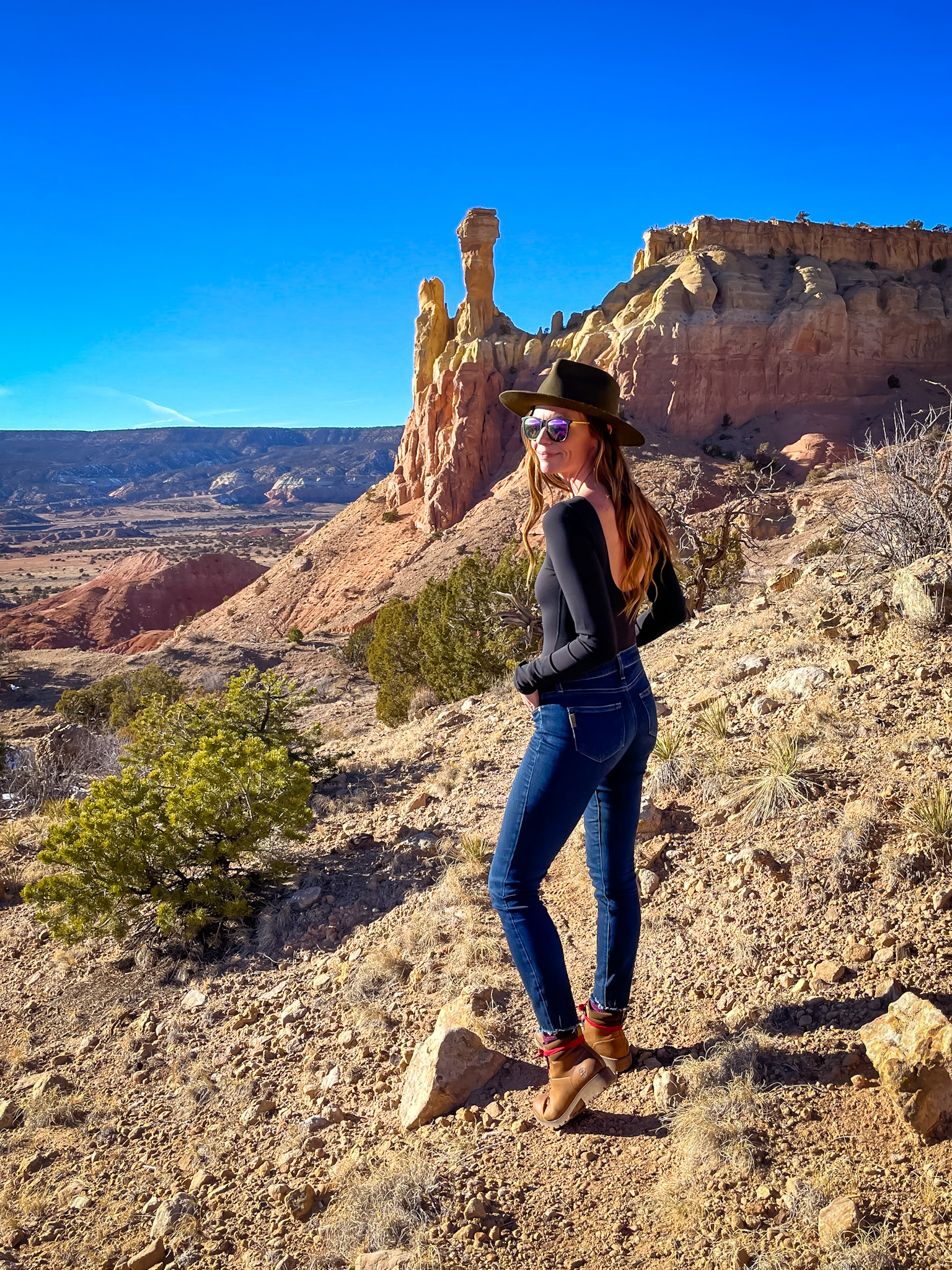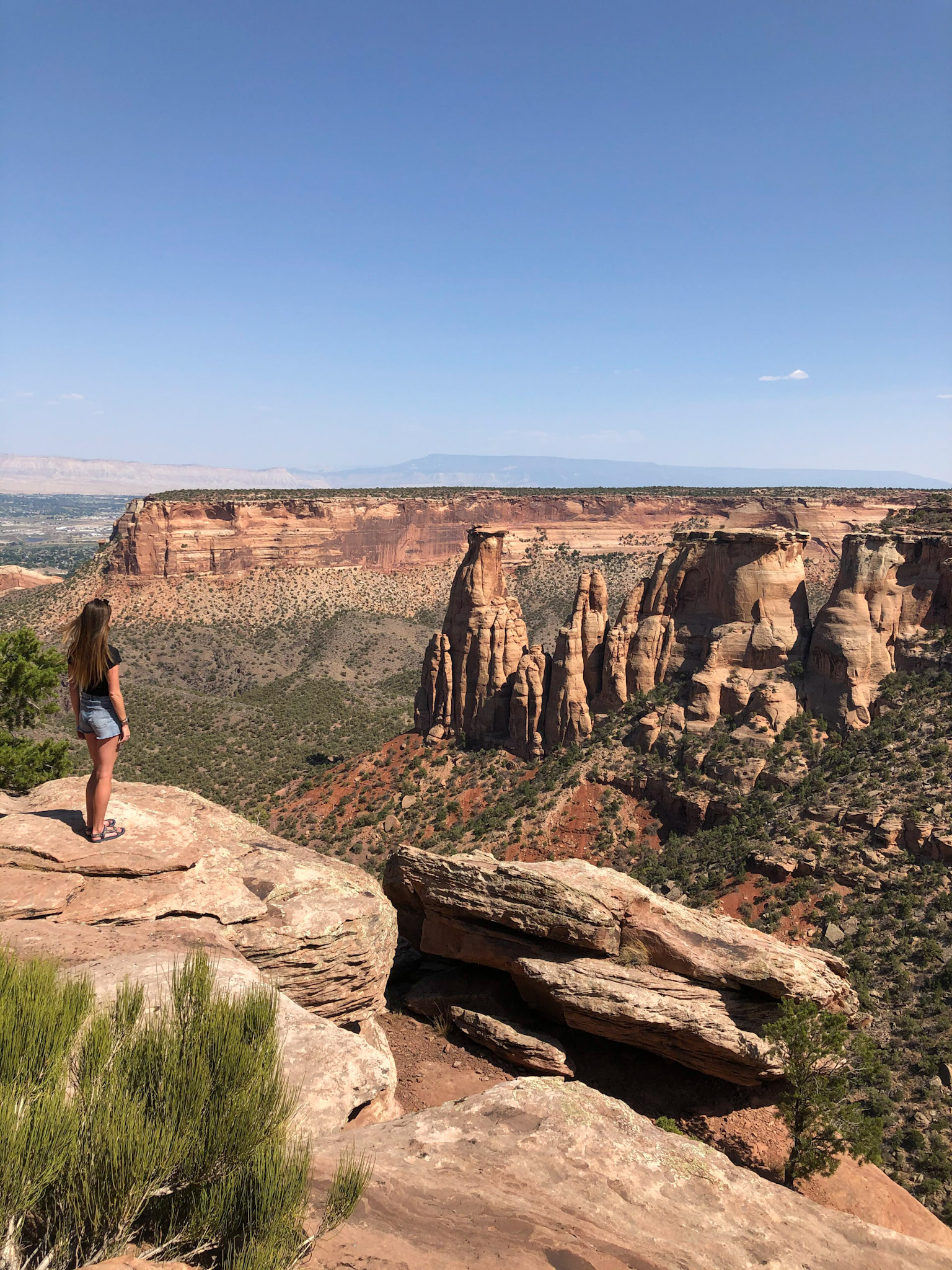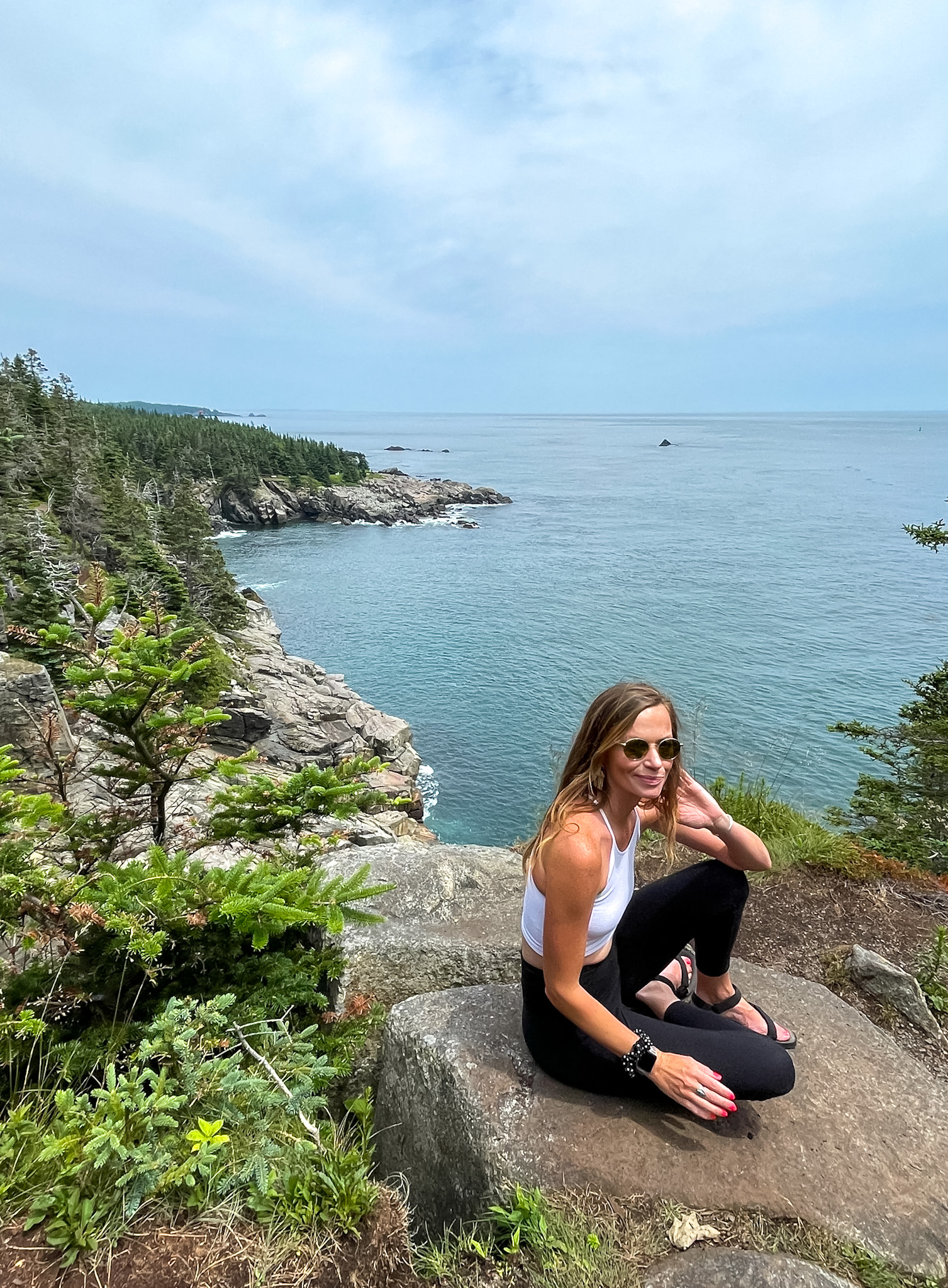In the age of social media, National Parks are trending like never before. From outdoor influencers working towards visiting all 63 (oh, hi), to t-shirts and merch with National Park checklists, to endless articles and travel guides all over this site and the internet as a whole – it’s safe to say that National Parks are more popular than ever before.
And while I love to visit any of the 63 officially designated “National Parks” whenever I get the chance, there are – of course – many more wild spaces worth visiting that do not have that particular official designation. Just within the National Park Service there are hundreds of public lands that do not have the “National Park” title. From National Seashores to Battlefields to Monuments – there are over 400 National Park Service sites.
So what’s the difference between these gems and official parks? Usually, parks are larger and have more funding. Also, while National Monuments can be proclaimed as such by the President (under the Antiquities Act of 1906), National Parks are now generally only designated through acts of Congress.
View this post on Instagram
Outside of the NPS system, there are of course endless other wild spaces in the United States alone – from state parks to city parks to National Forest Service and even private land that is made available to recreate on. Often these spaces are less crowded and a pleasant surprise, as they’re not as popular on social media.
As the year comes to a close and you’re planning your adventure schedule for 2023, here are some of the wild spaces slightly off the beaten path I recommend.
Red River Gorge Geological Area/Natural Bridge State Park – East Central Kentucky

I recently visited Red River Gorge and the nearby Natural Bridge State Parks for the first time, and to say I was blown away would be an understatement. The sheer vastness of the area is incredible, with plenty of hiking trails, climbing routes, and scenic drives – this is a can’t-miss stop.
While not a hidden gem to climbers or outdoors people, it is still totally underrated on the Western-centric outdoors social media feeds.
How to Get There:
Located in the Daniel Boone National Forest and next door to the also impressive Natural Bridge State Park, Red River Gorge Geological Area is just about an hour outside of Lexington, Kentucky, and two hours from Louisville – both perfect spots to base for adventure.
What to Do:
Red River Gorge is known for world-class climbing, and there are plenty of options for guided trips if you’re up for it. If you like to keep your feet on the ground, I recommend hiking Double Arch and Cloudsplitter Trails. In Natural Bridge State Park you can’t pass up the Original Natural Bridge Trail. Follow your adventures up with a pint and a slice (or two or three) at the infamous Miguels Pizza.
Where to Stay:
There are plenty of campgrounds and cabins to rent in the area itself or make the short trip back to Lexington which has plenty of hotel options. Louisville is a bit further, but has a bustling downtown scene and incredible hotels – I love the Moxy Downtown and 21c Museum Hotels.
Ghost Ranch – Abiquiu, New Mexico

Ghost Ranch may look familiar if you’re a fan of the legendary painter Georgia O’Keeffe. Located just outside of Abiquiu New Mexico, what is now a private retreat center was once her home, studio, and subject of many of her most iconic paintings. Driving into the 21,000 acre site feels nothing but otherworldly, to put it mildly. The red rock landscape and New Mexico skies that just don’t quit have made this ranch a popular spot for filmmakers, retreaters, paleontologists and day hikers. There is a small fee for a day pass payable online in advance or upon arrival.
How to Get There:
The drive to Ghost Ranch is part of the experience. Located about 53 miles North of Santa Fe and 62 miles southwest of Taos, it feels like you’re entering into a secret. From Abiquiu, you’ll drive 13 miles on US Highway 84 through some of the most pristine and awe-inspiring landscapes in the country to the entrance of the ranch.
What to Do:
There are eight hiking trails at Ghost Ranch, with the most popular being the hike to Chimney Rock. Just 2.5 miles out and back, there is some decent elevation gain but it is well worth it for the views unlike any other. Kitchen Mesa is another popular trail to venture out onto before exploring the museums and library on the grounds. You can also book one of several trail rides around the property – one of my favorite experiences of all time.
Where to Stay:
You can stay overnight at Ghost Ranch itself, or in the nearby town of Abiquiu. I love the eclectic short-term rentals in town and the historic Abiquiu Inn (opt for one of the heavenly casitas with screened porches and hammocks).
Colorado National Monument – Mesa County, Colorado

Colorado National Monument is part of the National Park Service, but as I mentioned, its designation isn’t the official and only “National Park.” But it’s hard to understand why not, with breathtaking views of incredible rock formations and deep canyons, it’s impressive to say the least. Located near Grand Junction Colorado on the western slope of the Rocky Mountains, there has historically been a push to re-designate the park as a “National Park” to further protect the area while bringing in more tourism and visitors.
At over 20,000 acres, it is smaller in size than the nearby National Parks in Moab, but still on par with other smaller designated National Parks. Either way, it is definitely worth your time.
How to Get There:
Colorado National Monument is in a great location for park lovers. Just off I-70 in Western Colorado, it is the perfect stop between a Colorado trip heading into Utah and the parks in Moab.
What to Do:
There are many shorter hiking trails and longer backcountry trails within the park boundaries. I like Serpents Trail and Devil’s Kitchen. Be sure to drive the entire 23-mile Rim Rock Drive and take advantage of the pull-outs for some seriously beautiful vistas.
Where to Stay:
Grand Junction, the largest city on the Colorado Western slope, is just about 15 miles from the monument and there are plenty of traditional lodging options. There are also campgrounds within the park itself. I personally love to drive a bit further (10 miles or so) out of town to reach Palisade – a quaint small town with incredible views and over 20 local wineries – and stay in one of the many AirBnb’s, Bed and Breakfasts or the highly recommended Spoke and Vine Motel.
Quoddy Head State Park — Lubec, Maine

Many of the spaces on this list might be familiar to perennial outdoor explorers, but I doubt this one would hit many frequent travelers’ radars. Just over 2 hours north up the coast from Acadia National Park (consistently one of the most-visited National Parks) lies Quoddy Head State Park. Known for its red and white striped lighthouse – West Quoddy Head Light is the easternmost lighthouse in the country and for a few weeks around the equinoxes sees the first sunrise in the United States. With miles of iconic jagged Maine coastline, trails, and wildlife watching, it is an intoxicating and welcoming respite from the more crowded areas of the state.
How to Get There:
Part of the charm of Quoddy Head State Park is in its remoteness. The park’s 541 acres are located on the easternmost peninsula in the United States, just 4 miles from the charming town of Lubec – the, you guessed it, the easternmost town in the United States.
What to Do:
Visit the West Quoddy Head Light for history and gorgeous photos, then hike along one of the five trails within the park. The coastal trail is the longest and offers some of the most incredible cliff and sea views I have ever encountered.
Where to Stay:
The area around Quoddy Head State Park is remote, but there are plenty of charming options for lodging. While the park itself does not offer campgrounds, there are some options nearby. I recommend spending a couple of nights in nearby Lubec to experience its quiet coastal vibes (I loved staying at The Inn on the Wharf — a renovated sardine factory) or even cross over into Canada from downtown into Campobello Island, New Brunswick.
Cumberland Island National Seashore — St. Mary’s, Georgia

Georgia may not be what you think of first when hearing the term “wild spaces”, but the state is a true hidden gem for outdoor enthusiasts. From state and city parks to several National Park sites, Georgia is incredibly diverse. My favorite wild space in Georgia is truly wild: Cumberland Island National Seashore. As an NPS site, it is definitely lesser known and its fans would probably love to keep it that way.
Georgia’s largest and most southern barrier island preserves historic sites, wild horses, marshes, dunes, unobstructed coastline, and only one commercial establishment (the Greyfield Inn). It is truly one of the most breathtaking and fascinating places I have ever been.
How to Get There:
You can only arrive at Cumberland Island by watercraft, private, or via the ferry in St. Mary’s. Just 38 miles north of Jacksonville, Florida, and 112 south of Savannah along the incredible Georgia coast, the town is completely unassuming and quaint.
What to Do:
You can opt for a day trip to Cumberland Island, but at 17.5 miles long there is a lot to see. I opted for a guided tour in a van (the only transport other than bikes on the island) and was able to see most of the historic sights in a day. There are hiking trails, biking trails, beautiful beaches, and historic ruins to explore for as long or as little as your trip allows.
Where to Stay:
There are two options to stay on the island itself: camping or The Greyfield Inn. Camping requires online reservations and everything must be packed in and out – there are no trash cans or commercial areas on the island at all. Another option is the all-inclusive and historic Greyfield Inn – the very private and sole commercial entity on the island.
Outside of the island, St. Mary’s offers several hotels and quaint bed and breakfasts.
Valley of Fire State Park – Clark County, Nevada

You may not think of a trip to Las Vegas as a chance for outdoor adventure, but it is one of the best bases in the nation for exactly that. There is an incredible amount of beauty in Nevada, with my favorite being just an hour outside of Vegas: Valley of Fire State Park. The aptly named park is like stepping onto another planet. The fiery red rock formations, slot canyons, petroglyphs, and dramatic vistas are well worth a day trip off the strip.
How to Get There:
Valley of Fire, Nevada’s oldest state park, is just over 46 miles northeast of Las Vegas in the Mojave Desert. The drive could not be easier and offers a nice break from the bustle of the city.
What to Do:
Even just a drive-through of the park is a worthy activity here – the views are outrageous at every turn. There are also many great hikes like the Fire Wave and Seven Wonders Loop and White Domes Trail. Be sure to stop off at the iconic Mouse’s Tank Road for some epic photos.
Where to Stay:
There are two campgrounds at Valley of Fire, but most people will visit as a day trip from Las Vegas.







